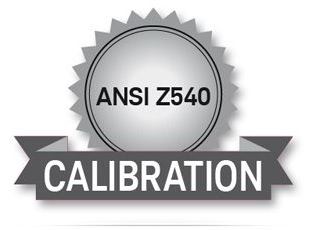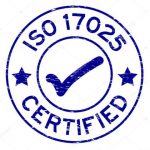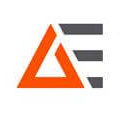Which Calibration Standard Should I Get? Z540-1 or ISO 17025 Calibration?
投稿 4月 12, 2019 によって Advanced Energy Editor
.jpg)

With two nationally recognized calibration standards in the industry, it can be confusing as to which one you really need for research or manufacturing/production requirements. As an end user, which calibration standard is right for you?
Z540 is an American standard and it pertains only to calibration labs. Its roots are in the old MIL-STD 45662A that most government agencies formerly required. Z540-1 includes all the requirements of that standard. Z540 also requires the traceability of the instruments used in the calibration to a National, International or Intrinsic standard and the processes to assure that calibrations are kept current. To assure traceability, this standard requires that traceability statements be on all calibration certificates. For overall accuracy, the generally accepted interpretation is that as a minimum, the instruments used for calibration should be 4 times the accuracy of the unit being calibrated. Z540 also allows Calibration Labs to self-certify. However, labs can also have outside agencies audit and certify them to Z540.
ISO 17025 is an International Standard and grew out of ISO Guide 25. In 2002 ISO started assessing all calibration labs to 17025. It has been updated several times since then, cleaning ambiguities, strengthening traceability requirements and expanding its overall coverage of processes. The premise of ISO 17025 is that traceability and a fully developed uncertainty statement are required to establish confidence in the calibration. Traceability is required to SI Standards (international standards based on the new SI units of measure). ISO 17025 also requires a full total uncertainty statement for the laboratory to prove the accuracy of the calibration. Its procedures assess the training and competencies of the lab personnel and the calibration procedures. ISO 17025 also requires accreditation by an internationally recognized authority.
Ultimately, ISO 17025 is a more in-depth management system which assures the competency of the lab, its personnel, its procedures, and a statement of uncertainty to assure the calibration is correct. It is an internationally recognized standard and the lab is accredited by an outside independent agency. As part of the calibration, a complete uncertainty statement is provided so you can be sure of the lab’s overall measurement accuracy.
Overall, both certifications are designed to provide good high quality calibration services. The decision, however, as to which calibration to get is often driven by your customers’ or your own Quality Systems requirements. If your customer requires a Z540 calibration to meet their internal (or their customers’) requirements, then you need a Z540 Calibration. Similarly, if your customers require an ISO 17025 calibration, then that is the calibration to get.
If you have more questions about calibration standards or this blog post, please reach-out to us here and mention the blog post title in your communication. If you are interested in temperature calibrators, Advanced Energy's TEGAM has a full array available online for your perusal. Thanks for visiting and reading our blog post.
